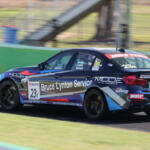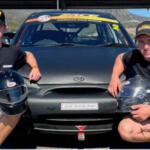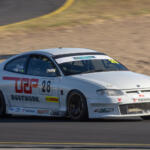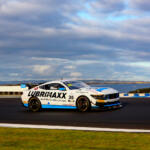FEATURE: SUPERUTES – FROM THE BUILDING SITE TO TRACKSIDE
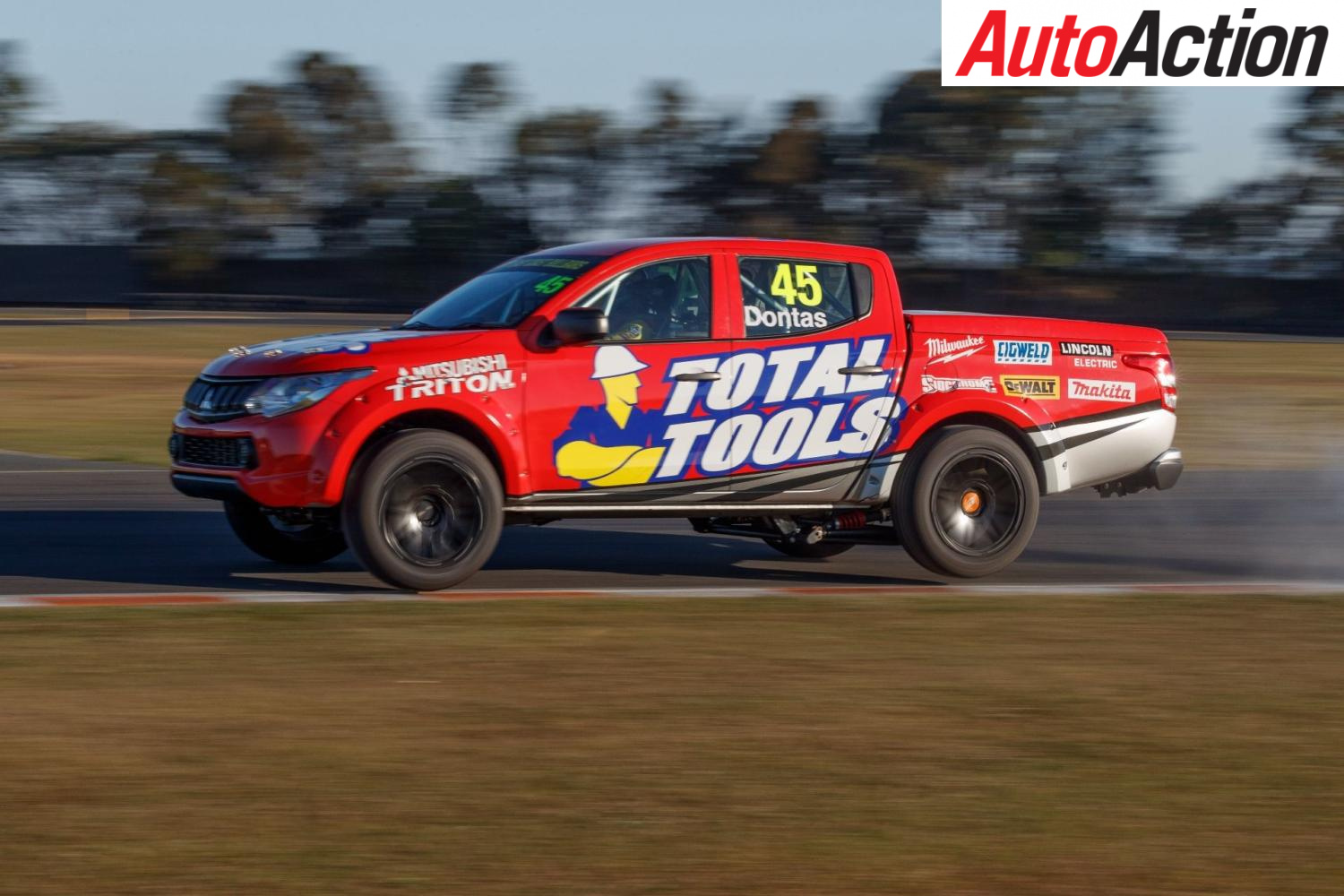

SuperUtes – From Building Site to Trackside
Things are busy in SuperUte Land, with Supercars and team working hard to get ready for the start of the season. Auto Action was there when some of the new racers were shaken down – and had an exclusive drive
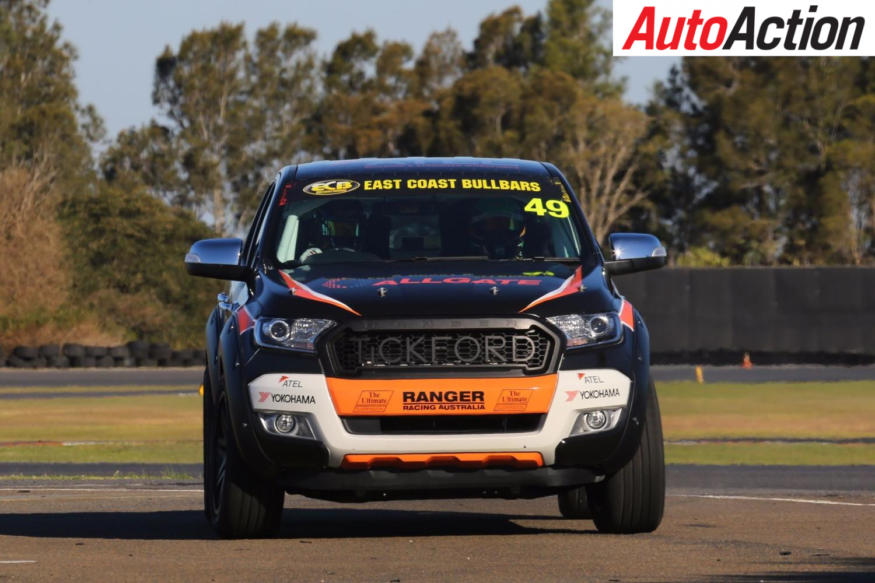
SuperUtes will join the Supercars support cast in 2018
AS Supercars faces up to a future beyond V8s, it’s already happening in uteland.
The difference is diesel. And twin-cabs.
There is a bunch of other all-new stuff as well for the inaugural SuperUtes series in 2018, as the category makes the wholesale change from Commodores and Falcons to the one-tonne workhorses that currently dominate showroom results.
This is not a gentle transition with toe-in-the-water efforts from Nissan and Volvo, or a Holden engine migration from V8s to V6s that’s barely into gear despite big promises for 2018, but a one-stop swap.
It is happening and six different brands of ute – Ford Ranger, Mitsubishi Triton, Mazda BT-50, Toyota Hilux, Isuzu D-Max and Holden Colorado – are being homologated and equalised for the 2018 season.
The first race for the next-generation SuperUtes is likely to be at the Adelaide 500 in March and and the plan is to have around 20 racers on the grid, with a variety of brands and bodies all equalised through a Pace Innovations mechanical package and parity testing by the Supercars team that’s now responsible for the category.
Based on a very brief track test at Norwell in Queensland, driving the Mitsubishi and Ford prototypes built by former championship-winning Supercars team boss Ross Stone, the racing promises to be tight and tough.
The new utes don’t have the V8 thunder that’s been part of the attraction of the Ford and Holden utes, but they are surprisingly chubby in the engine room and the exhaust note is gruff and grumpy.
They stop well and ride nicely but, right now, sideways is compulsory in corners.
Stone promises there is much more to come, with serious performance testing and suspension tuning in the next month and parity work to ensure all the utes hit the same engine targets of around 300 horsepower and more torque – around 540 Newton-metres – than the 5-litre Supercars V8s make.
The SuperUtes program is running late – very late – but that’s mostly down to over-ambitious targets set by Supercars executive Matt Braid when he advanced the idea. Originally promised for season 2017, the SuperUtes are basically a year behind.
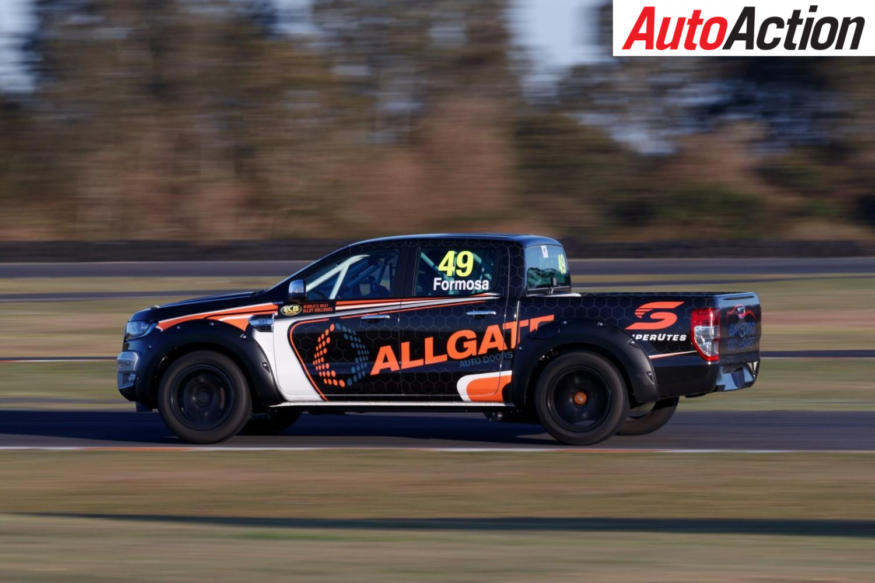
The Ford Ranger SuperUte on track
But that doesn’t mean any less commitment from Supercars management.
“It’s an important program for us,” says SuperUtes boss John Casey, who has become the troubleshooter and problem solver at Supercars headquarters. He’s already shifted the Bathurst 12-Hour up a gear and is likely to take control of the GT3 category, once a deal between Supercars and Tony Quinn is cemented.
Casey won’t get into the cost of the category, even though having Pace – and ace engineer Paul Ceprnich – involved, as well as Stone, cannot be cheap.
“The investment is primarily in the development of the cars. It’s the R&D in developing the engines, the race kit and control components,” says Casey.
For now, SuperUtes has backed the building of a Mitsubishi Triton and a Ford Ranger, with the Ranger closer to the category’s performance targets and running harder.
“We’re looking for good market representation. We also know some of the competitors had cars they wanted to run, and we prioritised those,” says Casey.
“There is no limit on the number of different utes, but to be ready for next year we wanted a good representative number. If someone came along now and wanted to homologate a VW Amarok, then we would get started on that project.”
Talking about the costs of the category, Casey says it doesn’t mean a giant spend for competitors.
Pace has prepared a comprehensive race package, from rollcage to Brembo brakes and MoTec engine management, that costs $60,000.
“If you think about the cost, it’s whatever you can buy the base car for, plus the kit,” says Casey. “And some people are picking them up for $10,000 at the auctions. Then it’s about $20,000 to build the racecar.”
He admits that SuperUtes got off to a rocky start, but says he has the program under control and moving forward.
“Yes, there were some overly-ambitious timeframes, but I’m confident that we’re back on track,” Casey says.
TRACK TIME

Paul Gover behind the wheel of a SuperUte
The SuperUte experience is… different.
It’s the first time I’ve driven a diesel-powered racecar of any type, and the first time I’ve been sitting in such a high-and-mighty driving position.
It’s not remotely like a racecar, yet it is. The gearshift is slick, there is a pedal box beneath my feet connected to proper brakes, and the punch from the turbodiesel engines is impressive.
Once I get turning, the ute wants to slide sideways. Not hugely, but all the time – and every time.
This is only a quick sprint at Norwell in Queensland to see what’s happening on the SuperUtes scene, as Ross Stone has unloaded the first of his racing trucks, the Triton and Ranger, for a group of prospective drivers to take a spin.
He admits the Mitsubishi is well down on power (by about 100 horsepower) and its state of development is obvious from a standard key start in the ignition, where the Ford has a kill switch and start button mounted on the rollcage bar across the top of the windscreen.
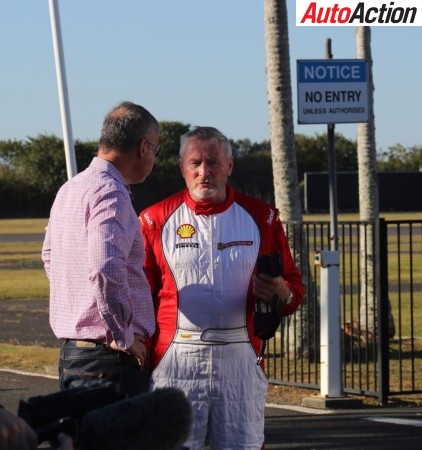
Paul Gover chats to SuperUtes boss John Casey
It was was Casey and Supercars technical chief David Stewart who got Stone on board and they are both happy with the results.
“I cannot think of a better person to help with the development of the cars. He’s the best person in Australia for the job. If I could have one pick, it would be Ross,” says Casey.
Right now, at Norwell with a bunch of drivers all looking for their time in a ute, Stone is super-busy. He also has Craig Haysted working hard, as the data man for the category.
“There is a lot of tuning we can do. There were concerns about black smoke from the diesels, but we can change a few lines of code and it goes away,” says Stone.
There are some shakedown niggles with an oil warning triggering in the Triton and the Ranger suffering from fuel surge, but these are minor things and are fixed for the second day of lapping at Norwell.
But now it’s my turn and I’m up first into the lower-powered Triton.
There has never been an easier racer to get into. Thanks to its 20-inch rims the ride height means I can step straight into the cabin and settle down into the roomy race seat, which is set an easy reach away from a race wheel on a quick-release hub. It’s the first wheel I’ve driven in forever that doesn’t have a suede rim, but that would be an easy upgrade.
The Triton starts first time as I turn the key and settles down to a thumping idle.
Into first in the nicely-tight gearbox, using a good looking machined shift lever, then up with the clutch and I’m away.
Onto the track, the front-end bite is impressive. The ute really turns.
The first push on the brake brings a solid feel and plenty of stopping.
So then it’s time to unleash the turbo motor (remembering the rally driver’s mantra “shift early, shift often”) down the curving back straight. There is solid shove and it’s moving along briskly, triggering the shift lights in second and third before a changing into fourth for the long right-hander.
The treaded tyres are not as grippy as slicks, but the ute is heavy and it gets them working. As I’m onto the power there is a quick change in the balance, pushing through into oversteer, but it’s nothing dramatic.
This feels like a solid and safe platform, with more to come.
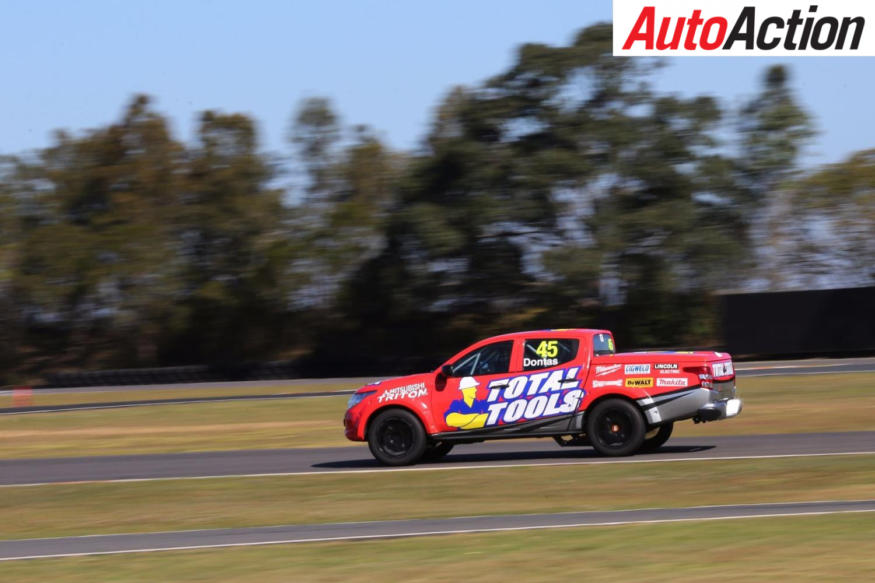
Paul Gover on track in the Mitsubishi Triton SuperUte
So I jump out and jump into the Ranger.
The difference is obvious, despite the similarities in the cabin, as I crack the throttle for the first time. The Ford is up and away.
It really thunders out of the second-gear corners, pushes third earlier and harder, and is deeply into fourth through the sweeper.
But…
The handling is completely oversteer. The Ranger has the same front-end bite as the Triton, but as soon as I touch the gas the rear starts to come unglued. It’s partly down to the Detroit Locker differential, but mostly it’s the amount of torque from the engine.
The Ranger feels much more racy and I’m working harder on the wheel, staying ahead of the slides but also, I admit it, having sideways fun.
The SuperUtes would be much grippier with a better tyre, and Casey admits he is looking beyond the 245×50 Yokohamas fitted for the test work, but that’s in the future.
Right now, I’m coping with a backwards entry to the hairpin as fuel surge kills the engine.
It’s a little thing, like the warning lights in the Triton, but Stone wants to get on top of things and Casey is overseeing the work to ensure they get through the program.
The SuperUtes are not ready yet but, as a complete non-believer, I’ve been won over.
There is clear potential for good, close racing between a wild bunch of brands and utes and drivers, and that’s what motorsport always needs.
The SuperUtes are way, way better than the Ssangyong pick-ups that give ute racing a bad reputation in New Zealand, rocking and rolling and looking totally un-racy.
The new utes are not perfect, and won’t be for quite a while, but the signs are good and they are most un-ute to hustle around a track.
“We saw almost universally good feedback from the competitors. I’m very encouraged and very confident that we will have a good grid at the start of next year,” says Casey.
For once, I agree.
BRAINS BEHIND THE BRAWN
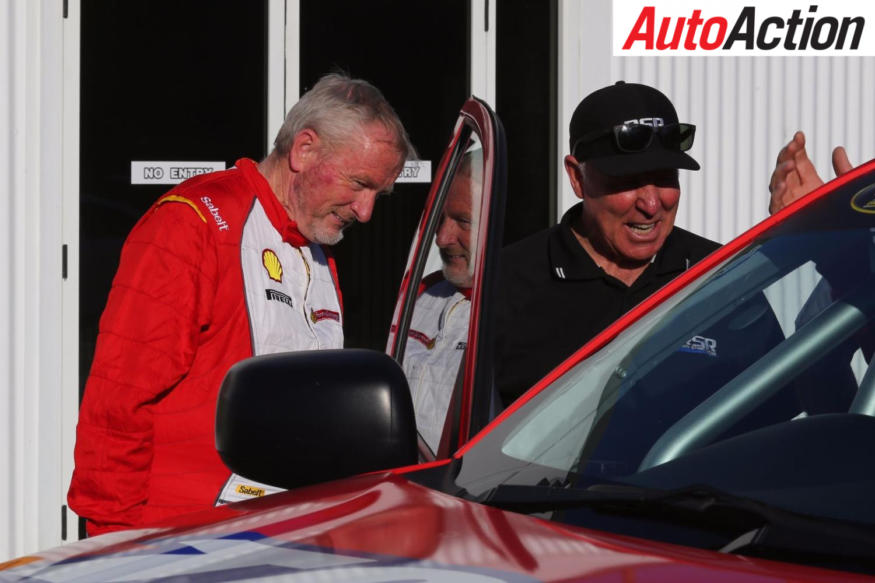
Paul Gover talks to Ross Stone about the technical aspects of the new SuperUtes
THE most obvious change to the SuperUte racers is the rear suspension.
Hanging down below the ute tray are a pair of horizontally-mounted shock absorbers that work in a Pace Innovations package to ensure traction and drive for all the various utes.
There are also 20-inch alloys, to give the utes a tougher look, and the suspension drops the utes much closer to the road.
But that’s just the visual stuff and the Pace package runs long and deeply into the racing conversion.
It’s a $60,000 kit that includes a Tremec T56 gearbox with clutch and bellhousing, Supashock shock absorbers, MoTec dash and connectors, the steering wheel, pedal assembly and Brembo brakes, and on and on through the suspension at each ends and even the exhaust pipes.
“I reckon Pace has done a really good job. When you see the body language of the cars on track, they look good,” says Ross Stone.
“I think a lot of people thought they might be leaning and lurching and stuff, but they are actually pretty stable.”
He says building the two test utes was straightforward and relatively easy, from the rollcage to the suspension.
“The only real hitch is because we’ve stayed with the standard wiring loom. So we’re integrating the MoTec system.”
Stone has come out of semi-retirement, after working with Erebus through the sale of Stone Brothers Racing and then doing GT3 engineering, and says he was investigating the utes before Supercars called.
“I was really bored. Once the new utes got announced I started looking into it. I thought they would be alright,” Stone says.
“A lot of the things we talked about building into the utes have been put into them.”
He says the Ranger is the target for development and parity work with Craig Haysted in charge of the engine program.
“We have to get the other ones up to the Ranger. it’s got more torque than a V8 ute and slightly less power. Craig Haysted, does Supercars is the only guy who can touch the engines on these utes. And he will do the parity, once we get to it.”
Stone says the build time for the utes should ensure a solid grid at the start of 2018.
“We put them together here in my workshop on the Gold Coast. They go together pretty quickly.”
As for the on-track behaviour, he says it’s early days and there is more to come.
“They are a little bit oversteery, but I’d suggest the rear sway bar is a little too hard. We’ll work on that.”
And what about the rear shock absorbers, and their location in a very non-standard location.
“You cannot believe how hard it would be to get vertical shock absorbers on all of the utes. It was going to be nearly impossible.
“So, this way, there is a rear frame and the shock absorber works through a rocker, with a pivot at the front, and an anti-roll bar. The plan is that every ute that’s built will have the same spec of shock absorber and spring in the rear.”
FIRING UP A VETERAN

Paul Gover talks to Kim Jane about his thoughts on the new SuperUtes
VETERAN ute racer Kim Jane is won over early by the new SuperUtes.
“Mate, it’s good. I cannot say anything too bad about it at the moment,” Jane tells Auto Action.
He’s just run laps at Norwell in the two utes at the familiarisation and likes the feel.
“It goes, it stops, it turns, almost too well. This thing turns, the brakes are nice.
They are not bad. Actually, surprisingly good.”
Jane has been a ute racer since 2003, following a three-year retirement when the closure of the Calder Park Thunderdome meant an end to his time in local NASCAR racing.
“I stopped racing, got married, had a kid. Then I came back in 2003 with a ute.”
He’s definitely a veteran, even if he cannot remember his exact total of race starts.
“I don’t know if I’ll make 400 races, but I’m in the 300s somewhere.”
He’s also been a regular contender.
“I lost the championship by 20 points in 2008, we were third in ’07, and we’re leading this year.”
Jane is close to committing to the SuperUtes series and even had a potential backer with him at Norwell.
“These utes are going to be awesome next year. There are little things in your own car you’d do to make it feels nicer.
“It’s nice and loose. I think after you had two or three test days in your own car, and adjusted to it, it would be fine.
“They’re already better than what we’ve been driving.”
By PAUL GOVER, News Limited
Article originally published in Issue 1719 of Auto Action.
For more Auto Action’s latest feature, pick up the latest issue of the magazine, on sale now. Also make sure you follow us on social media Facebook, Twitter, Instagram or our weekly email newsletter for all the latest updates between issues.


